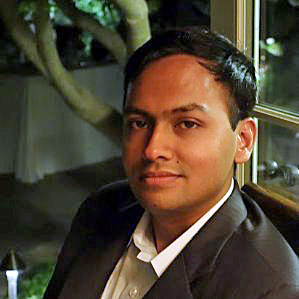This blog is a special contribution from Sitaram Asur, a Computing Innovation Fellow from 2009-2010.
 When I graduated with my PhD from the Ohio State University in June 2009, it was a very disappointing job market. The economy was at its lowest ebb and most companies that I was interested in had established a freeze on their hiring. I was keen on an industrial research position but there were very few suitable opportunities available. I am very thankful to the CIFellows project for providing opportunities for fresh graduates like myself to stay in the research pipeline.
When I graduated with my PhD from the Ohio State University in June 2009, it was a very disappointing job market. The economy was at its lowest ebb and most companies that I was interested in had established a freeze on their hiring. I was keen on an industrial research position but there were very few suitable opportunities available. I am very thankful to the CIFellows project for providing opportunities for fresh graduates like myself to stay in the research pipeline.
My dissertation research focused on data mining on dynamic interaction networks. During my PhD, I had investigated biological interaction networks and Wikipedia and DBLP networks. Social networks such as Facebook and Twitter were just gaining popularity at that time, so social computing was a fairly fresh field. I was eager to pursue further research in that direction. The Social Computing Lab at HP Labs headed by Dr. Bernardo Huberman was of prime interest to me, given their prior work on Web, social and collaboration systems. It was immensely gratifying when I received the email from Peter Lee, original Principal Investigator for the CIFellows Project and current Head of Research at Microsoft, indicating that I had received the fellowship and would be working with Bernardo Huberman at HP Labs.
Then began the process of getting the agreements in place between HP and CRA. While this did not involve me, I was keen to start and spent my time reading up on the research that Bernardo and his colleagues had done and brainstorming ideas. When I finally joined HP, I was immediately welcomed by the group. The Social Computing Lab was a small group, but they were very friendly and dynamic. I had an initial discussion with my mentor, Bernardo about my interests and he was very supportive of the ideas that I wanted to pursue and gave me the freedom to decide my own line of research. I could work on my own projects while also collaborating with others in the lab.
Bernardo Huberman introduced me to the area of attention economics, which considers human attention as a scarce commodity and optimizes the management of attention. We had several fruitful discussions on the value of real-world networks and that led to my first project at HP, on measuring the value of social media for forecasting real-world events. I decided to use Twitter data for this purpose as it was a dynamic system with quick updates. In the 2009-early 2010 period Twitter was gaining popularity slowly and had just reached 50 million users. It was not the force that it is today. To measure real-world events, I decided to use the domain of movies for two reasons – the presence of a lot of chatter about movies on Twitter, and a real-world metric of performance (box-office revenue). Getting the data was not easy and required the use of several crawlers to collect data on future movie releases. The objective was to collect data on different movies during the week before the release of those movies and try to predict effectively the box-office revenue over the opening weekend. Bernardo and his colleagues had already shown how in Digg and YouTube, one could use early measurements of attention to effectively predict eventual online popularity, but this was a new step as it was not online popularity that we were predicting but real-world popularity in terms of the box-office revenue. And we showed we could do it. Our algorithm outperformed the Hollywood Stock exchange which is the de-facto proxy for box-office performance and achieved high accuracies for movies.
When we submitted our research for publication, this attracted sensational attention from both the research community as well as the media. The paper was published at the International Conference for Web Intelligence where it was also nominated for Best Paper award. We received numerous requests for interviews from respected news outlets such as the LA Times, BBC and Fast Company. It was showcased in various news publications. It made the cover story of New Scientist and was chosen by the New York Times Magazine for their annual “Year in Ideas”. And predictably, we also received tremendous interest from Hollywood and television networks given the potential for predicting movie performances. It was incredibly overwhelming for me as a new researcher to gain so much attention from a project.
Following this, I did some more research on Twitter, developing an algorithm for measuring social influence and studying how trends are formed and evolve. Bernardo Huberman and Prith Banerjee, the Director of HP Labs found my work impressive enough to offer me a full-time position at HP Labs nine months into my CIFellowship. I have worked here at the Social Computing Lab at HP Labs since then. I was recognized by Fast Company as a Most Creative Person for 2011 for my continued work with Twitter and box office returns.
The CIFellowship was an immensely rewarding experience. It afforded me the opportunity to interact with brilliant researchers and work on really interesting problems. And it gave me the boost to gain a permanent employment position and take off in my career. I am grateful to the efforts of the CRA in putting this program in place and providing opportunities for numerous fresh graduates to gain successful careers.
Sitaram is on the organizing committee for the CIFellows Workshop May 22-23, 2014.









